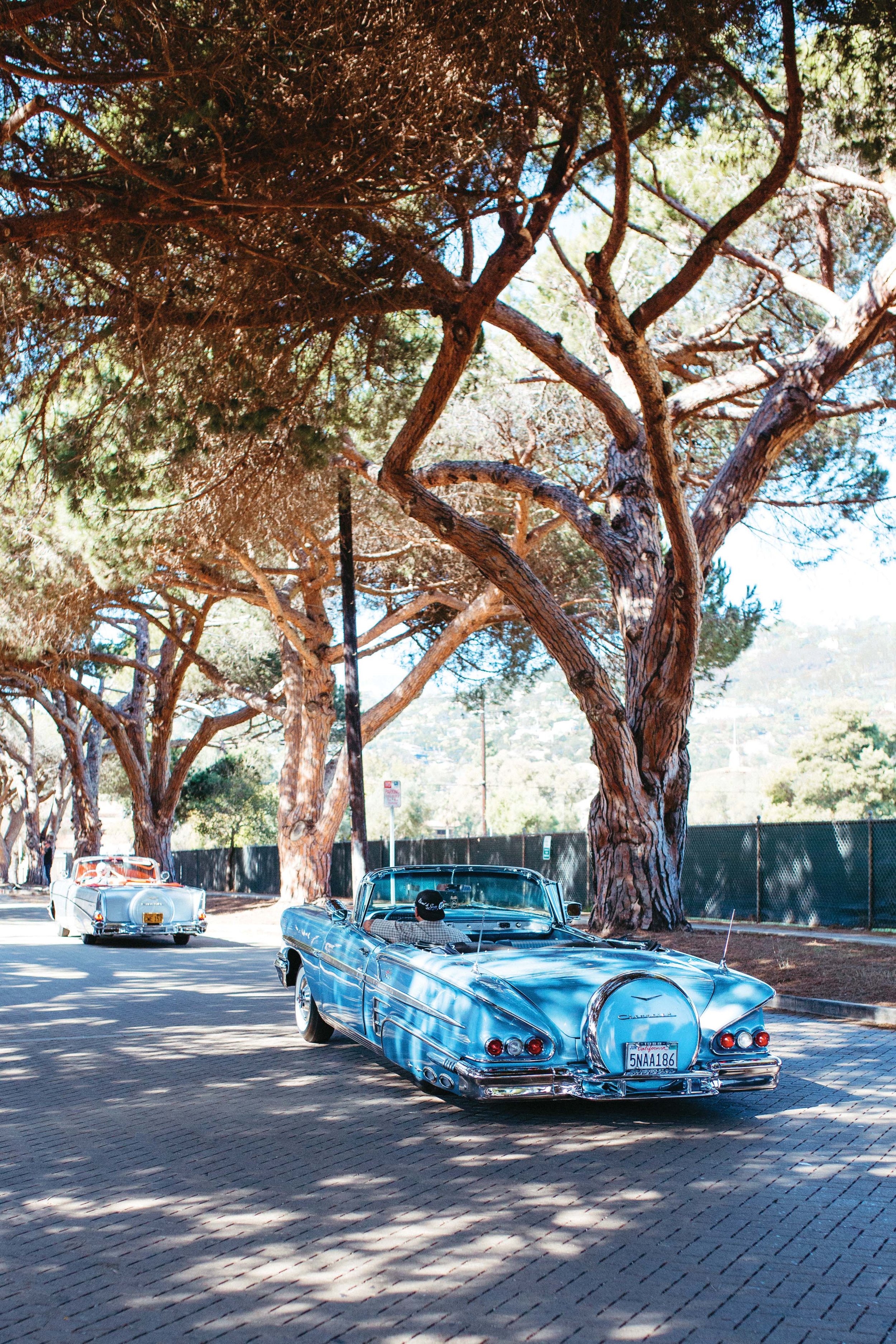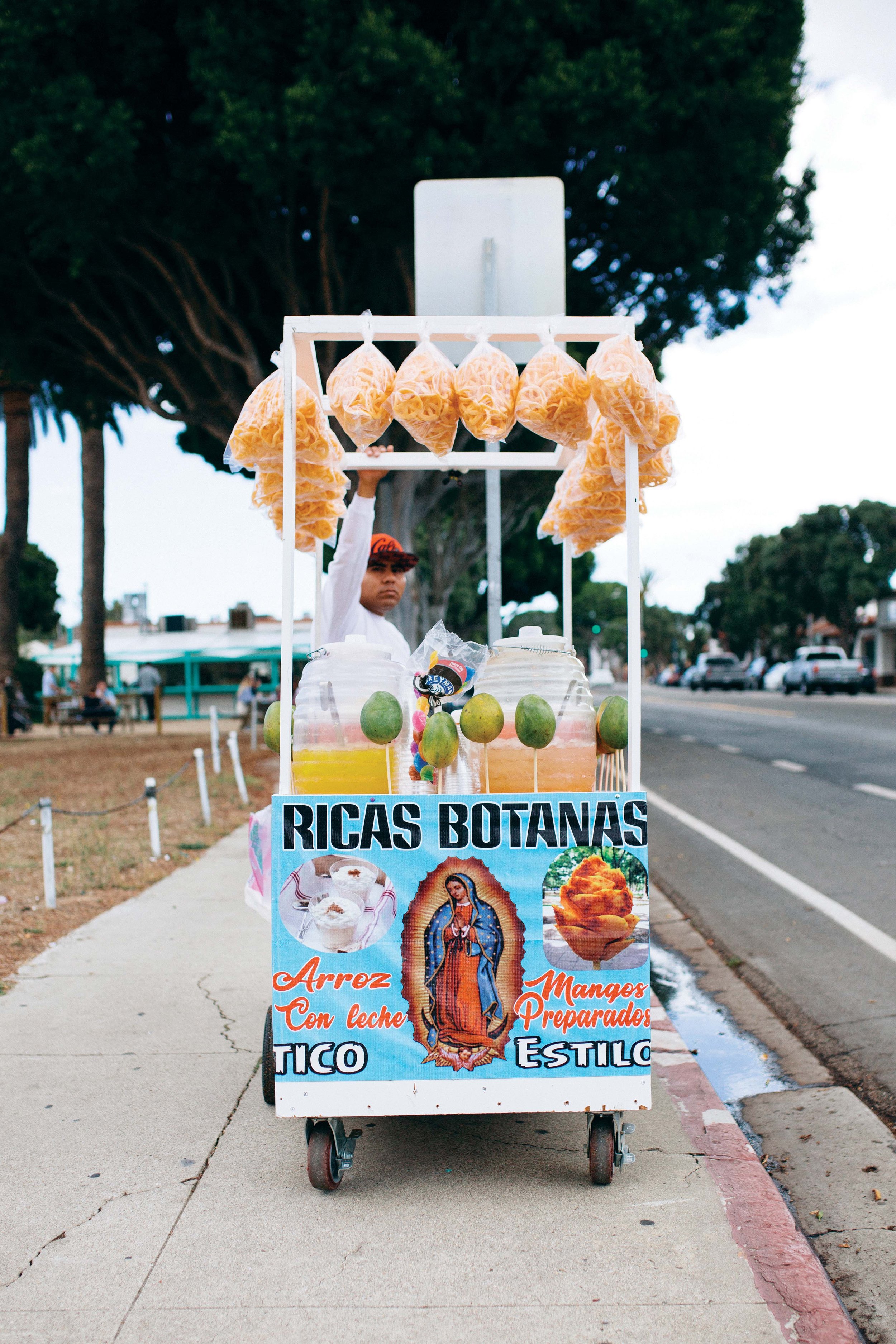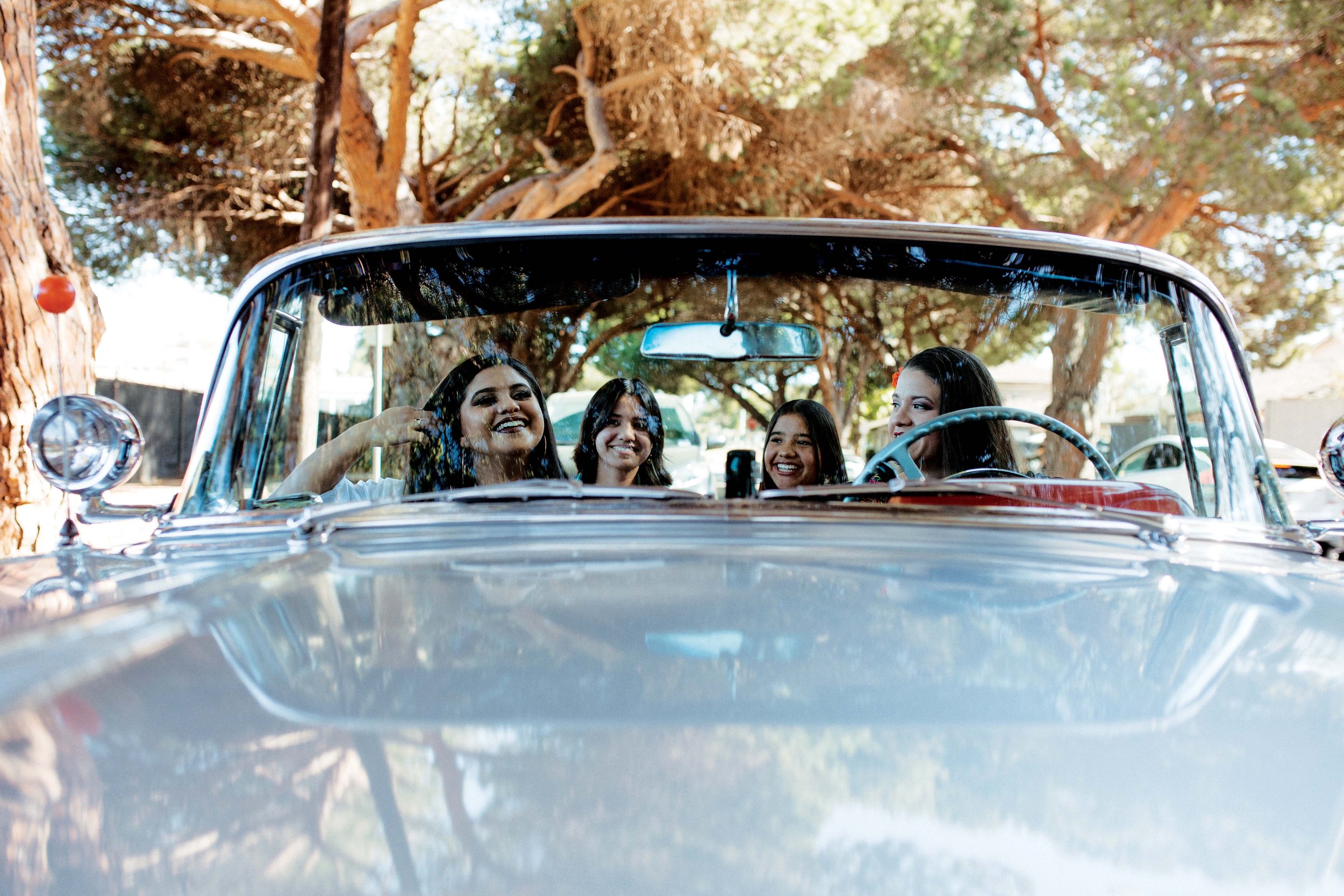Chicana Cultura
An urban tour of the Eastside and Milpas corridor—taste, see, and learn what makes this side of the neighborhood and its people so special
Written by Michael Montenegro | Photography by Sara Prince and Dewey Nicks
CRUISING
George Trujillo’s family business—his barber shop—was established in 1929. It’s like going down memory lane, with the original vintage barber sign and black-and-white checkered floor. Brothers Efrem Reynozo (in the 1957 Chevrolet Bel Air convertible in Inca Silver) and Rene Perez (in the 1958 Chevrolet Impala in Blue Magic) cruise the backside of Ortega Park. If you are lucky, you could soon take a tour of the American Riviera in style too—Reynozo will be launching a vintage-car tour service in 2022.
TASTE CALLE MILPAS
The iconic La Super-Rica Taqueria that Julia Child called one of her favorites. Owner Isidoro Gonzalez’s tacos and tamales still draw crowds lining up around the block, and he only takes cash. Do as locals do to get the morning started with pan dulce or a breakfast burrito at La Tapatia Bakery. Craving seafood and Mexican food? Look no further than Cesar’s Place; the michelada is a must-try too.
FIESTA
It’s not a party without a piñata. The tradition has Mesoamerican Native roots and has been practiced in our community for over a century. Find these colorful favors—which were originally made of clay—at local stores or visit Chapala Market (shown here), one of the best-stocked and most-frequented tiendas on Milpas.
Ortega Park is the heart of Santa Barbara. The vibrant murals tell the stories that represent our diverse community. If only this piece of land could talk—its memories would span from being a salt marsh to a town dump to the creation of the historic park in the 1920s. Decades of celebrations have taken place here, like Cinco de Mayo festivals with lowriders, quinceañeras, and block parties. It’s the people—the children, parents, and elders from the neighborhood over the generations—that make the park special. Ortega Park was intersectional because of the multiculturalism of African, Italian, and Irish people, alongside those of Mexican heritage. Generations migrated here to pursue the American dream for a better future for their children.
MENTORS
Superior Brake and Alignment owner Bob Seagoe services classic cars and gives back to local youth by offering mechanics apprenticeships, since many of these technical classes have been cut from local high school budgets; El Potrillo Western Wear carries Mexico’s finest boots and clothing and offers discounts for local charity and school fundraisers; Bobby Bisquera, aka Mexipino, in his 1961 Chevy Impala convertible; Efrem Reynozo; crafts from Mujeres Market; Danny Trejo, president of Nite Life, the longest running automobile/lowrider car club in Santa Barbara.
Think of locals dancing to cumbia and decompressing to Mexican ranchera music.
NIGHT LIFE
La Pachanga Night Club unfortunately is not active anymore, but it once was the place to be: It was loud and carnival-like and felt like a hometown dive bar or cantina that would encapsulate you somewhere in the Southwest or Mexico. It was a place where English was spoken as a second language, with a Latin accent.
Raze Up hits the streets; Ruben Perez in a 1957 Chevy Impala in Blue Magic; in the summer of ’75, neighborhood children immortalized themselves in concrete during the completion of Ortega Park; Trejo’s 1952 Chevy Suburban; Michael Montenegro, writer and filmmaker (@ChicanoCultureSB). Jorge Salgado, owner of the Barber Shop, and his 1950 Mercury; Cindy Falcon, a legendary Chumash Chicana, was the president of Ladies United, an all-women lowrider/automobile club during the 1970s; Augie Trejo in his 1950 Chevrolet Deluxe; Art Perez’s 1939 Chevrolet coupe.
THE FUTURE
Beauty with resilience runs in the Jaimes family: Valerie, younger sisters Lilyanna and Alicia, and mother Charlotte. Valerie, a community organizer and activist, was born and raised in Santa Barbara, is an alumna of Santa Barbara High School, and recently graduated from the University of San Diego—the first member of her family to graduate from college—with a bachelor’s degree in ethnic studies and sociology. “Higher education has empowered me to be who I am,” she says. “My future is to be an educator and empower my community to be who they want to be, whether they want to learn a trade, be an artist, or explore outer space.” Valerie is currently residing on Kumeyaay indigenous land and working with the Chicano Park Museum and Cultural Center in San Diego.






































